Patrick Farr sent us this cool picture of two adult cicadas climbing on his hand. They’re Tibicens, but I’m not sure of the species.
Gerry Bunker said in the comments that this is likely a T. canicularis.
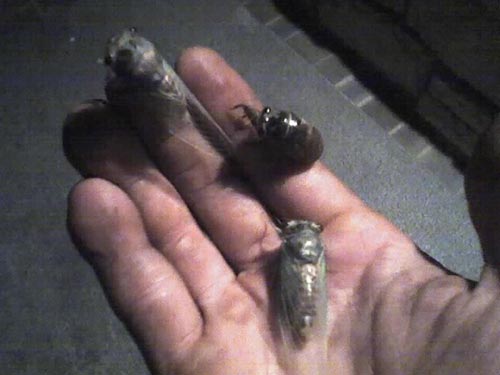
Patrick Farr sent us this cool picture of two adult cicadas climbing on his hand. They’re Tibicens, but I’m not sure of the species.
Gerry Bunker said in the comments that this is likely a T. canicularis.

Marsha M. sent us this photo of a Neotibicen tibicen (T. chloromerus, T. chloromera) from New Jersey! Read more about it on her blog.
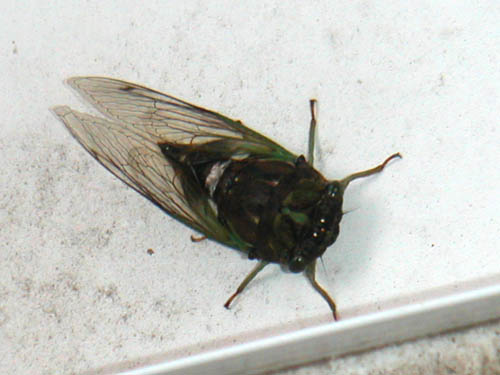
Edward Austin sent us this photo of a Tibicen from Fulton County Ohio. If someone knows the species, please post it in the comments.
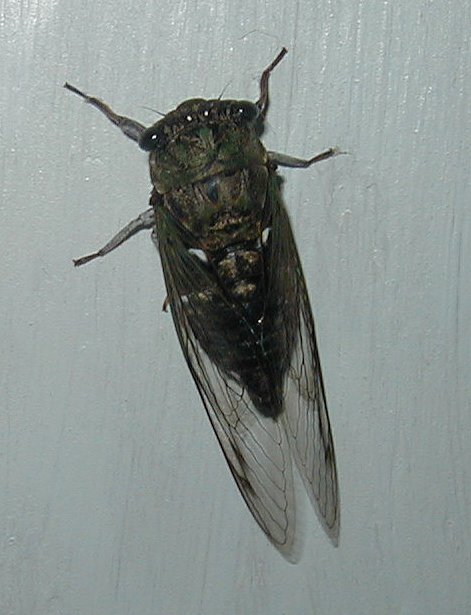
Paul Krombholz has an interesting question about Neotibicen identification.
In Kathy Hill’s picture of 18 species, T. canicularis looks quite different from T. davisi, but I have at least one T. davisi, captured in my back yard, that looks very similar to three canicularis individuals I caught in Northern Illinois a couple of weeks ago. The canicularis individuals all have the white “hip” spots and none of my davisi have them have them. T. davisi has a slightly larger head. The big question is, What features reliably distinguish the two species considering all the variety seen within species?

I panicked the other day when Richard Fox’s excellent Tibicen anatomy page was down. I’m glad to say that it is back in service and that it is an incredible resource. Check it out if you want to learn more about a cicada’s parts.
This excellent photo of a Neotibicen dorsatus (formerly T. dorsata) was taken in Oklahoma by Vic Fazio.
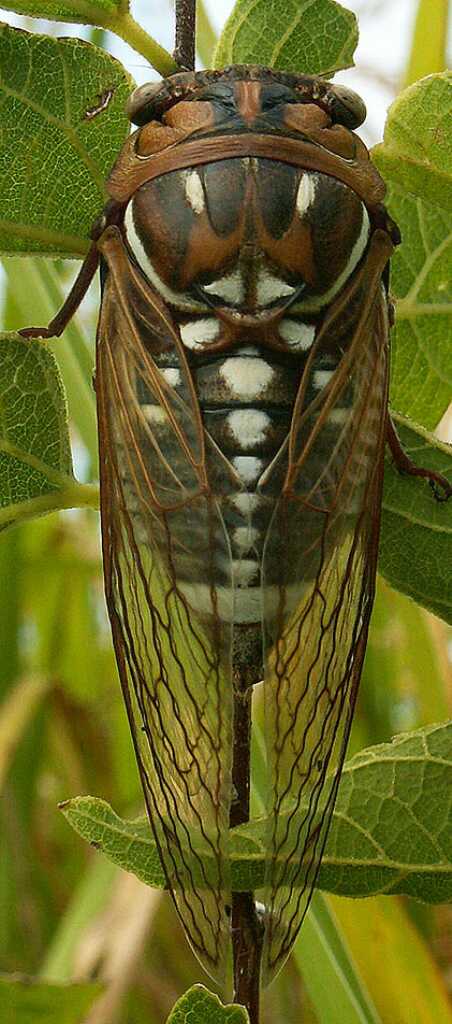
Paul Krombholz has discovered some interesting variations in the Tibicen davisi cicadas. I’m quoting Paul’s email in its entirety below.
Here is the composite photo showing variation in Tibicen davisi. The
additional one I wanted to add turned out not to be as dark as I thought,
but it has a different pattern. All these came from the trees in my
backyard in central Mississippi this season. Colors on the dorsal (top)
side vary from dark brown to green. Perhaps the most typical is the “olive”
one in the middle. On the ventral (bottom) side, the black abdominal stripe
varies from very wide to non-existent. Variation in the size of the black
abdominal stripe is not related to the color on the dorsal side, as I have
seen absolutely no abdominal stripe on both a greenish one and a very dark
brown one.Davis described a variety of T. davisi—T davisi var. hardeni—which has
little or no abdominal stripe. However, it also has darkening next to the
wing veins of the seven marginal cells as in T. superbus
(http://static.flickr.com/31/60751246_f60d00e2a9.jpg?v=0), While its upper
side is “less rusty” than the typical T. davisi, its underside is also
green. (Dr. Alan Sanborn, personal communication). Since my examples only
vary as to the “greenness” of the upper side and to the size of the
abdominal stripe, none of them fit completely the description of var.
hardeni. If anyone finds a T. davisi that meets the description of var.
hardeni, I think Dr. Sanborn would like to know about it.
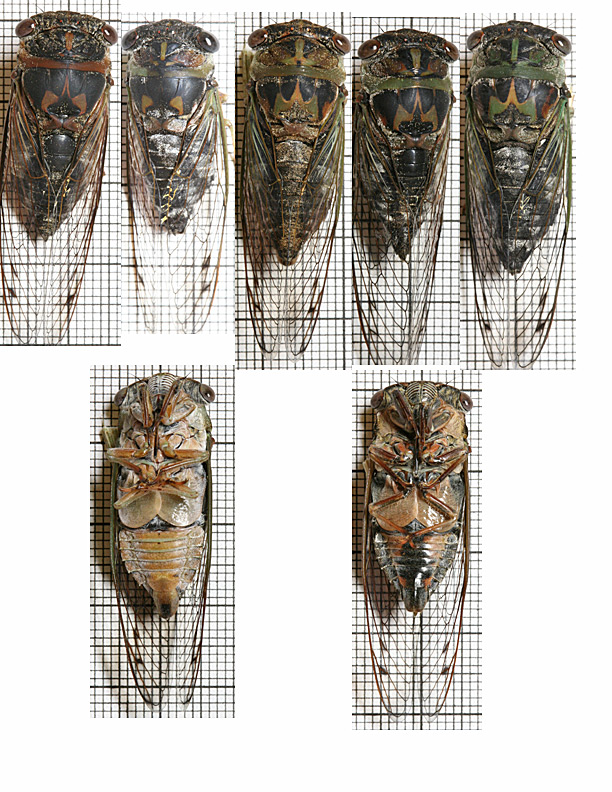
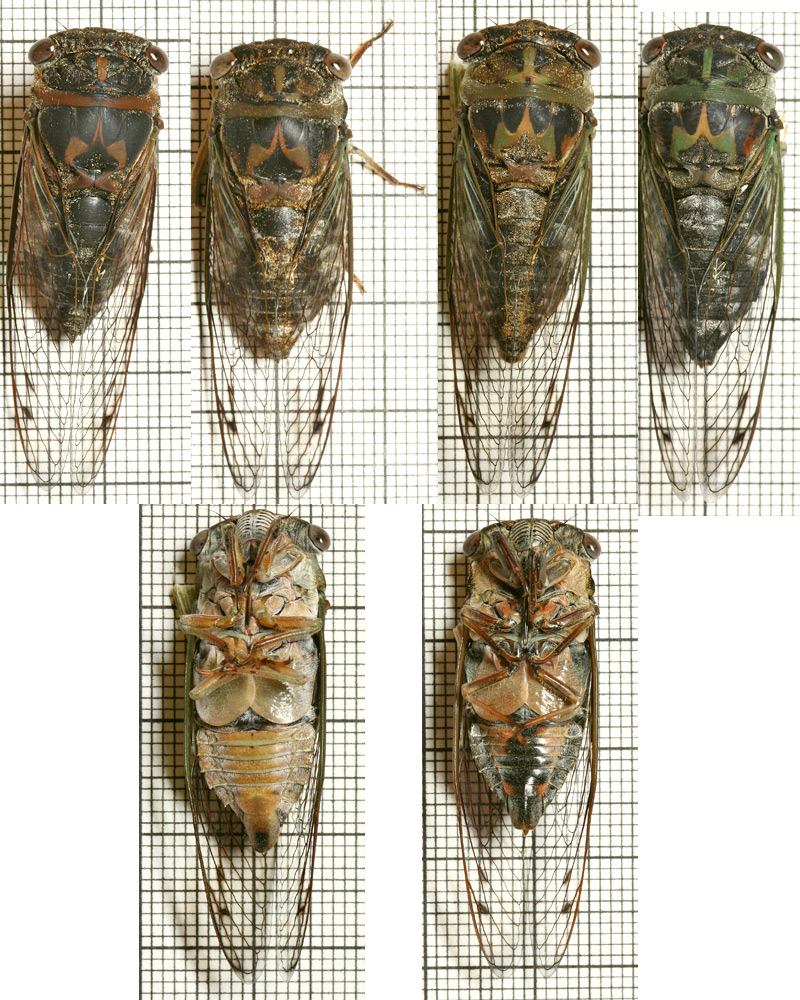
Cicada researcher Kathy Hill took this unbelievable photo of 18 different USA Neotibicen & Megatibicen specimens, plus a Quesada gigas (upper right) for comparison.
Click/tap the image for a much larger version. Contact Insect Singers for more information about the image.
I just took a photo of all the “eastern USA” Tibicens except
latifasciata, which we haven’t got yet (I didn’t include the “little
western” Tibicens like T. texana that are more centrally located
either). But I did also add T. duryi from the west coast and Q.
gigas, just for comparison.I just wanted to prove that auletes IS the biggest USA cicada 🙂
Note that the these cicadas were reorganized into two new genera: Megatibicen (larger USA Tibicen) and Neotibicen (smaller USA Tibicen) since this original announcement in 2006.
* Note as of 2023 the name of this cicada has changed to Megatibicen grossus. You can also call it a Northern Dusk-Signing Cicada. Cicada names change a lot.
Here’s a great photo of a Neotibicen shedding its skin from Chris Millette.
Thought you might like to share my photo of a dog day cicada that I
made in Hummelstown, Pennsylvania last week.
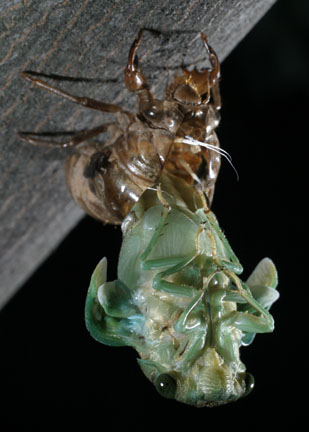
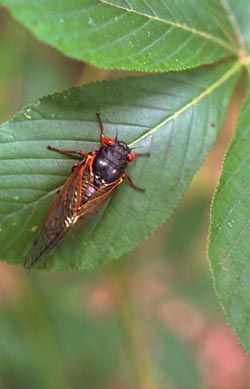
We have four new Roy Troutman galleries of restored images from the 1980’s and early 1990’s!
NEW! Roy Troutman’s Cicada Photos. Assorted cicadas photos from the 1980s!
NEW! Roy Troutman’s Cicada Photos. Brood X photos from 1987 and 1988
NEW! Roy Troutman’s Cicada Photos. Brood XIV cicada photos from 1990-91